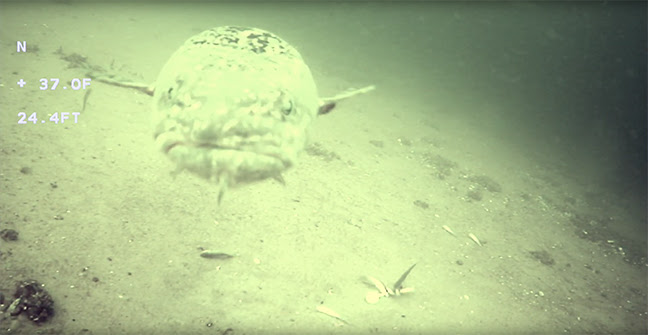
|
Aqua-Vu® HD Cameras Capture Never-Before-Seen Burbot Behavior |
|
High-definition underwater video reveals remarkable fish spawning behavior |
|
Crosslake, MN – Eelpout are in. Burbot are a big deal. Lawyers are likable. Really? Actually, yes. This lone freshwater member of the cod family easily qualifies for the most interesting fish in the world—right up there with megamouth sharks, pufferfish and those bizarre, alien-like creatures that haunt the deep seas. Particularly intriguing about the enigmatic eelpout is that for most of the year, no one particularly knows where they go. We know that the species’ circumpolar natural range stretches from the Great Lakes to Alaska and across the Bering Strait to Europe and Asia, excluding the United Kingdom, where they’ve not been captured for nearly half a century. We also know that during late winter, adult burbot begin assembling en masse, spawning on sand and gravel substrates while ice still covers the lake. That’s when anglers encounter and increasingly target them. There’s a movement afoot, particularly among adventurous young ice anglers like Minnesota guide Hays Baldwin and Saskatchewan fishery scientist Jeff Matity, to learn more about the burbot; to study them through the lens of an underwater camera; to learn where and how to catch them; and finally, to appreciate and release the larger, older burbot to swim and spawn once again. |
|
|
Fishing guide Hays Baldwin harvests delicious smaller burbot, but releases larger breeders to help perpetuate the species. |
|
But not all anglers who chance upon burbot appreciate them. For the eel-like fish likes to greet us with a slightly amusing, friendly bark and by “hugging” our forearms with its soft, sinuous tail. Nevertheless, everyone seems to find them fascinating to observe with an underwater camera. When burbot assemble to spawn late each winter, we marvel at their large gregarious assemblies, their spectacular mottled flanks and the impressive energy they display within seemingly tranquil underwater environs. According to Matity, who has studied burbot in their natural habitat with an Aqua-Vu for years, spawning burbot exhibit some intriguing behavior. “Interestingly, burbot are the only species I know of that participates in the spawn process whether they’re physically spawning or not,” says Matity, a fisheries scientist, fishing guide and writer from For Qu-Appelle, Saskatchewan. “Fish that aren’t spawning appear very lean relative to the spawners. They arrive first on the spawning shoal, where they eat every living organism that will not leave the area. Non-spawners then keep other animals away from the spawning shoal throughout the process. While pike fishing, we’ve even watched burbot carry deadbaits away from a spawning site and then drop them off several meters away. These nursemaid non-spawners remain in the spawning area to guard eggs until fry hatch, which they detect from scent cues.” |
|
|
It’s not unusual for an aggressive burbot to ‘kiss the camera. |
|
Matity adds that spawning females spend most of their lives feeding in deep water and only visit the spawning shoal to drop eggs. He also believes spawning males make several forays back and forth from spawning sites to keep a full stomach. “During the late winter to early spring spawn season, large burbot are exceedingly vulnerable to harvest,” Matity believes. “Observing a spawning group of fish with an underwater camera can produce the illusion that the lake swarms with large specimens. Actually, as coldwater predators, burbot represent a precious and limited resource—among the first species to suffer when water quality declines. “They’re absolutely delicious on the dinner table,” adds Matity. “Some folks call them freshwater or poor-man’s lobster. But we strongly encourage the harvest of one or two small fish only, while releasing the larger spawning specimens to swim and treat us to another round of this spectacular underwater ritual.” |
|
|
Burbot perform spectacular spawning dances through the lens of a high definition underwater camera. |
|
Fascinating Burbot Facts:
|
|






 Advertising
Advertising